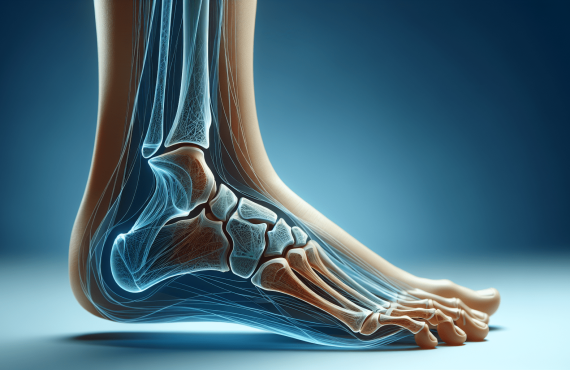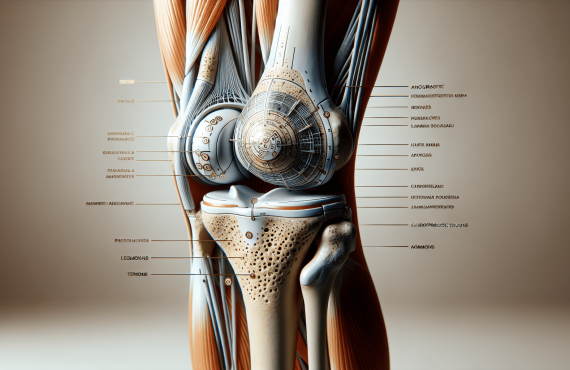If you’re struggling with the debilitating pain of sciatica, look no further than Henry Chiropractic in Pensacola, Florida. Led by Dr. Craig Henry, a licensed chiropractor, the team at Henry Chiropractic specializes in using chiropractic adjustments to address sciatica and improve overall health and wellness. Whether you’re dealing with back pain, neck pain, or simply want to start feeling better each day, Dr. Henry and his colleague, Dr. Aaron Hixon, are here to help. With their expertise, passion for helping others, and extensive training in various chiropractic techniques, you can trust that you’re in good hands. Experience relief from sciatica and start living a more pain-free life with chiropractic adjustments at Henry Chiropractic.
Table of Contents
Overview of Sciatica
Definition of sciatica
Sciatica is a condition characterized by pain that radiates along the sciatic nerve, which runs from the lower back down to each leg. The pain can vary in intensity and may also be accompanied by numbness, tingling, or weakness in the affected leg.
Causes of sciatica
Sciatica is usually caused by a herniated or slipped disc in the spine. Other common causes include spinal stenosis, spondylolisthesis, pregnancy, muscle spasms, or injury to the spine. These conditions can put pressure on the sciatic nerve, leading to pain and discomfort.
Symptoms of sciatica
The main symptom of sciatica is pain that starts in the lower back and radiates down the leg. This pain can range from a mild, dull ache to a sharp, shooting sensation. Other symptoms may include numbness or tingling in the leg, difficulty controlling the leg or foot, and weakness in the affected leg. These symptoms can be debilitating and interfere with daily activities.
How Chiropractic Adjustments Help with Sciatica
Chiropractic adjustments explained
Chiropractic adjustments, also known as spinal manipulations, are gentle and controlled movements performed by chiropractors to realign the spine and other joints in the body. By applying precise pressure and manipulation techniques, chiropractors aim to restore proper alignment and mobility, reducing pain and inflammation in the affected area.
Benefits of chiropractic adjustments for sciatica
Chiropractic adjustments have been shown to provide relief for sciatica by addressing the underlying cause of the pain. By realigning the spine and reducing pressure on the sciatic nerve, chiropractors can help alleviate pain, improve mobility, and enhance the body’s natural healing process. Additionally, chiropractic care is non-invasive and drug-free, making it a safe and effective option for many patients.
How chiropractic adjustments relieve sciatic nerve pain
Chiropractic adjustments can relieve sciatic nerve pain by reducing inflammation, improving nerve function, and promoting overall spinal health. By restoring proper alignment, chiropractors help alleviate pressure on the sciatic nerve, allowing it to function optimally. This can reduce pain, improve range of motion, and accelerate the healing process.
Diagnostic Process
Initial consultation and medical history
During the initial consultation, a chiropractor will take a thorough medical history and ask about any symptoms you are experiencing. They will also inquire about your lifestyle, previous injuries, and any factors that may be contributing to your sciatica. This information will help the chiropractor tailor a personalized treatment plan to address your specific needs.
Physical examination and assessment
Following the medical history, the chiropractor will perform a physical examination to assess your range of motion, muscle strength, reflexes, and posture. They may also conduct orthopedic and neurological tests to further evaluate your condition and determine the extent of your sciatica.
Diagnostic tests for sciatica
In some cases, the chiropractor may order diagnostic tests such as X-rays, MRI scans, or CT scans to get a clearer image of your spine and pinpoint the exact cause of your sciatic pain. These tests can help guide the treatment plan and ensure the most effective approach is taken.
Treatment Plan
Customized treatment plan
Based on the findings from the initial consultation and diagnostic tests, the chiropractor will develop a customized treatment plan specifically tailored to your needs. This plan may include a combination of chiropractic adjustments, other chiropractic techniques, and complementary therapies to address the underlying cause of your sciatica.
Spinal adjustments and manipulations
The cornerstone of chiropractic care for sciatica is spinal adjustments and manipulations. Through these techniques, the chiropractor will apply targeted pressure to specific areas of the spine to realign the vertebrae and alleviate pressure on the sciatic nerve. This can provide immediate relief and promote long-term healing.
Other chiropractic techniques used for sciatica
In addition to spinal adjustments, chiropractors may use other techniques to complement the treatment plan. These may include soft tissue therapies, such as massage or myofascial release, to relieve muscle tension and promote relaxation. They may also recommend exercises and stretches to improve flexibility and strengthen the supporting muscles.
Patient Education
Explanation of sciatic nerve pain
Chiropractors believe in empowering patients through education. They will take the time to explain the underlying causes of sciatic nerve pain and how chiropractic adjustments can help alleviate the symptoms. Understanding the condition and the rationale behind the treatment can help patients actively participate in their recovery and make informed decisions about their healthcare.
Teaching proper posture and body mechanics
One of the key aspects of chiropractic care for sciatica is addressing postural imbalances and poor body mechanics that may contribute to the condition. Chiropractors will educate patients on proper posture and body mechanics to reduce stress on the spine and prevent future issues. Simple adjustments to everyday activities, such as lifting techniques or sitting positions, can make a significant difference in preventing exacerbation of sciatic pain.
Recommendations for lifestyle changes
Chiropractors take a holistic approach to healthcare and recognize the importance of lifestyle factors in overall health and wellness. In addition to chiropractic adjustments, they may recommend lifestyle changes, such as engaging in regular exercise, maintaining a healthy weight, improving sleep habits, and managing stress. These changes can support the body’s natural healing process and help prevent future episodes of sciatica.
Collaboration with Other Healthcare Providers
Referrals to medical specialists
In some cases, chiropractors may refer patients to medical specialists for further evaluation or treatment. This can be particularly beneficial if additional interventions, such as surgery or injections, are necessary. By working collaboratively with other healthcare providers, chiropractors can ensure that patients receive the most comprehensive and appropriate care for their sciatica.
Working alongside physical therapists
Chiropractors often work in conjunction with physical therapists to provide a multidisciplinary approach to treating sciatica. Physical therapists can help with exercises, stretches, and functional movements to improve strength, flexibility, and overall function. By combining chiropractic adjustments with physical therapy, patients can experience enhanced pain relief and improved functional outcomes.
Incorporating other therapies for comprehensive care
Chiropractors may integrate other alternative therapies into the treatment plan to provide comprehensive care for sciatica. These therapies may include acupuncture, massage therapy, heat or cold therapy, and electric stimulation. By offering a range of therapies, chiropractors can address the various aspects of sciatica and tailor the treatment to each patient’s unique needs.
Success Stories
Patient testimonials
Many patients have experienced significant relief from sciatica through chiropractic care. Patient testimonials can provide valuable insight into the effectiveness of chiropractic adjustments for sciatica. Hearing about other individuals’ positive experiences can offer hope and encouragement to those suffering from sciatic pain.
Case studies of sciatica patients treated with chiropractic adjustments
Chiropractors may also present case studies of sciatica patients who have been successfully treated with chiropractic adjustments. These case studies provide detailed accounts of the patients’ conditions, the treatment approach taken, and the outcomes achieved. They serve as examples of how chiropractic care can make a difference in the lives of individuals with sciatica.
Positive outcomes and long-term benefits
Chiropractic care for sciatica has been associated with positive outcomes and long-term benefits. Research has shown that chiropractic adjustments can reduce pain, improve mobility, and enhance overall quality of life for sciatica patients. By highlighting these positive outcomes, chiropractors can instill confidence in their patients and encourage them to seek chiropractic care for sciatica relief.
Managing Pain and Discomfort
Strategies for managing pain during treatment
Chiropractors understand the importance of managing pain and discomfort during the treatment process. They may recommend various strategies to help patients cope with pain, such as applying ice or heat, using over-the-counter pain medications, practicing relaxation techniques, or utilizing specialized pain relief modalities. These strategies can help alleviate pain and improve patient comfort during the recovery period.
Home care tips for pain relief
Chiropractors also provide patients with home care tips for pain relief and self-care. These may include specific exercises or stretches to perform at home, recommendations for proper ergonomics, instructions for using heat or cold therapy, and advice on maintaining a healthy lifestyle. By actively participating in their own care, patients can supplement the effects of chiropractic adjustments and promote faster healing.
Importance of follow-up visits for long-term relief
Regular follow-up visits are essential for achieving long-term relief from sciatica. Chiropractors will schedule periodic appointments to monitor progress, adjust the treatment plan as needed, and provide ongoing support to patients. These visits allow chiropractors to address any new concerns or symptoms, ensure the maintenance of proper spinal alignment, and prevent future episodes of sciatica.
Costs and Insurance Coverage
Understanding chiropractic insurance coverage for sciatica
The cost of chiropractic care for sciatica can vary depending on factors such as geographical location, the severity of the condition, and the individual chiropractic practice. However, many health insurance plans offer coverage for chiropractic services, including treatment for sciatica. It is important for patients to review their insurance policy to understand their coverage and any potential limitations.
Out-of-pocket expenses for chiropractic adjustments
For individuals without insurance coverage or those who have limited coverage, out-of-pocket expenses for chiropractic adjustments can vary. Chiropractors may offer payment plans or discounted rates for cash-paying patients to make the treatments more affordable. It is recommended to discuss financial considerations with the chiropractic office to determine the best payment options.
Benefits of investing in chiropractic care for sciatica
While there may be associated costs with chiropractic care for sciatica, the benefits can outweigh the expenses. Chiropractic adjustments offer a non-invasive and drug-free approach to treating sciatica, reducing the need for potentially costly medications or surgical interventions. Additionally, investing in chiropractic care can lead to long-term relief, improved quality of life, and reduced reliance on other healthcare interventions.
Conclusion
In conclusion, chiropractic care offers a safe and effective treatment option for individuals suffering from sciatica. Through spinal adjustments and other chiropractic techniques, chiropractors can address the underlying causes of sciatica, alleviate pain, and promote healing. By collaborating with other healthcare providers, educating patients, and offering comprehensive care, chiropractors strive to provide long-term relief and improve the overall well-being of their patients. If you are experiencing sciatica, it is encouraged to seek chiropractic care for effective and holistic treatment.

























